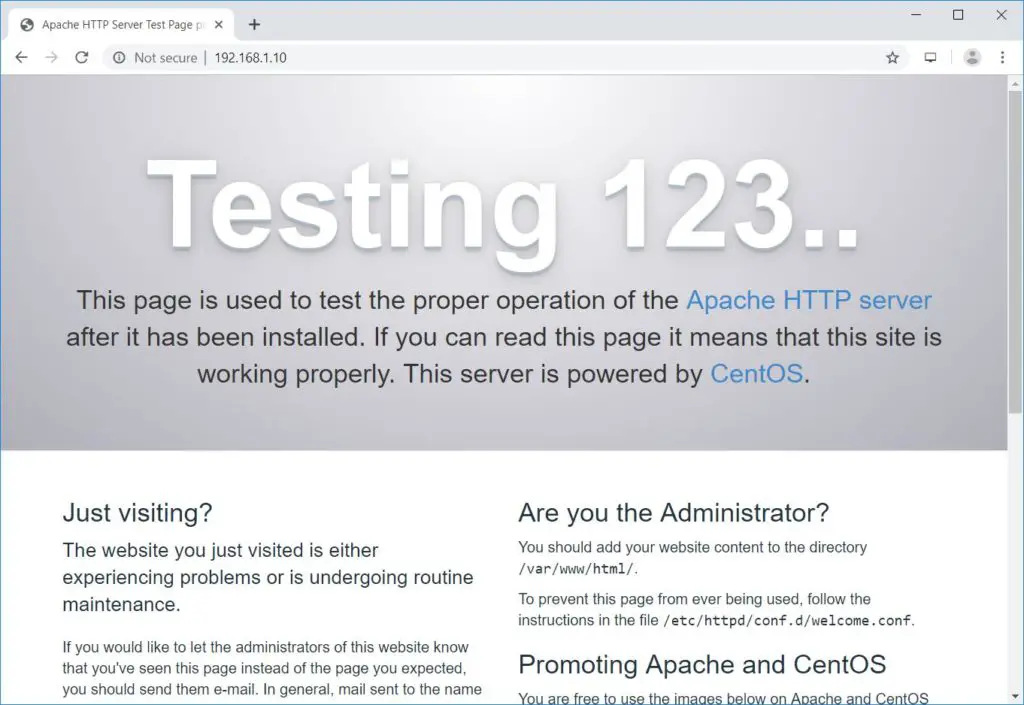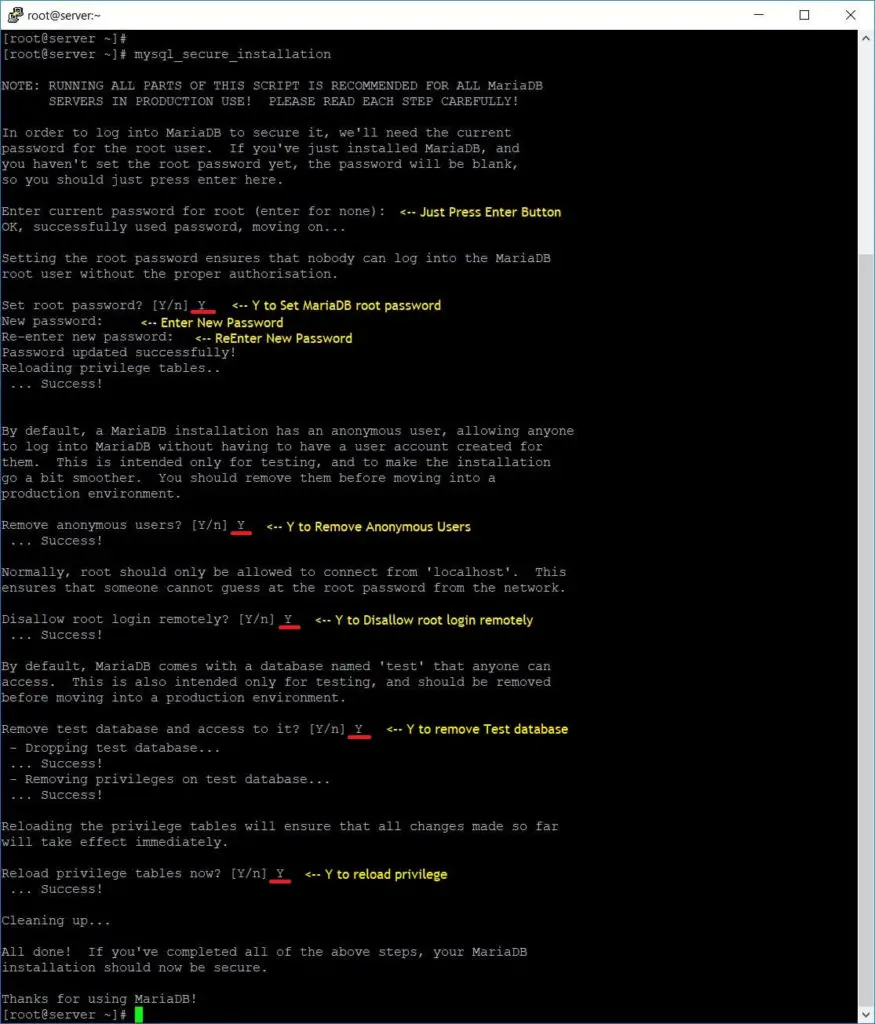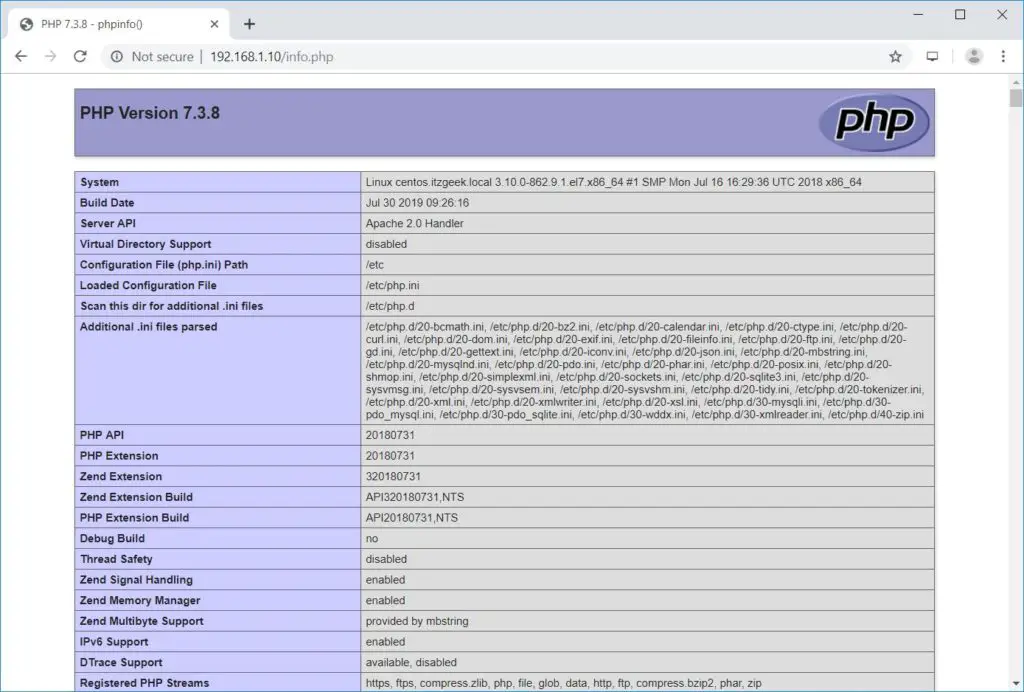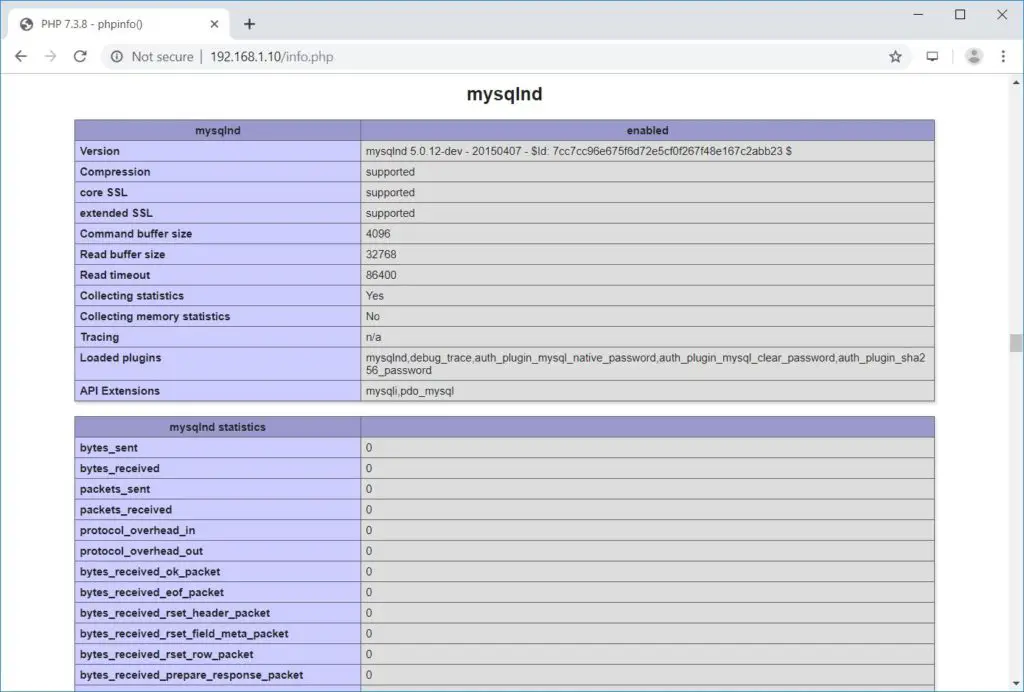How To Install Linux, Apache, MariaDB, PHP (LAMP Stack) on CentOS 7 / RHEL 7
LAMP Stack stands for Linux, Apache, MariaDB, and PHP stack. It is mainly used for hosting websites and blogs.
Here, we will see how to install LAMP stack on CentOS 7 / RHEL 7.
Install LAMP Stack
Install Linux
Here is the article about step by step installation of CentOS 7 / RHEL 7.
Now you have Linux, and the next is to install Apache, MySQL, and PHP on it. Let’s install them one by one.
Install Apache
The package name of the Apache is httpd. Install the httpd package using the YUM command.
yum install -y httpd
Start the Apache service by using the following command.
systemctl start httpd
Enable Apache webserver to start automatically during every boot.
systemctl enable httpd
Configure the firewall to allow HTTP requests.
firewall-cmd --permanent --add-port=80/tcp firewall-cmd --reload
To make sure everything installed correctly, we will now test Apache to ensure it is working correctly. Open up any web browser and then enter the following into the web address:
OR
You will get the web page saying “Testing 123”, this confirms that the Apache is working fine.

Install MariaDB
In CentOS / RHEL, MySQL is now replaced by MariaDB as a default database.
To install MariaDB, use the following command.
yum install -y mariadb mariadb-server
Start the MariaDB service using the below command.
systemctl start mariadb
To make the MariaDB start during every boot. Type the following on terminal and hit enter.
systemctl enable mariadb
Nex is to make the MariaDB secure by using the mysql_secure_installation command.
This program enables you to improve the security of your MariaDB installation in the following ways:
- You can set a password for root accounts.
- You can remove root accounts that are accessible from outside the localhost.
- You can remove anonymous-user accounts.
- You can remove the test database (which by default can be accessed by all users, even anonymous users), and privileges that permit anyone to access databases with names that start with test_.
mysql_secure_installation
Output:

Install PHP
By default Apache server supports the HTML language only, not PHP. Install the PHP package along with support for the MariaDB.
PHP v5.4 (End Of Support)
The PHP version (v5.4) available in the CentOS base repository is already the end of support.
PHP v7.3
Remi, a third-party repository which offers up to date version of PHP (v7.3). To enable the Remi repository, install the Remi repository auto-configuration package.
yum install -y https://rpms.remirepo.net/enterprise/remi-release-7.rpm yum install -y --enablerepo=remi-php73 php php-cli php-mysqlnd
You need to restart the server after the installation of the PHP, to do that type the following on the terminal.
systemctl restart httpd
Test LAMP Stack
To test PHP, place a .php file on to the default directory of the Apache.
echo "<?php phpinfo()?>" > /var/www/html/info.php
Now open your web browser and type the following into the web address:
OR
The page looks like below:

Scroll down the browser to the modules section to check the support for MariaDB. You will get the screen like below.

Conclusion
That’s All. You have successfully installed the LAMP Stack on CentOS 7 / RHEL 7. If you are new to a database management system, consider installing phpMyAdmin to manage databases over a web browser. Also, install Let’s Encrypt SSL certificate for secure communication.
